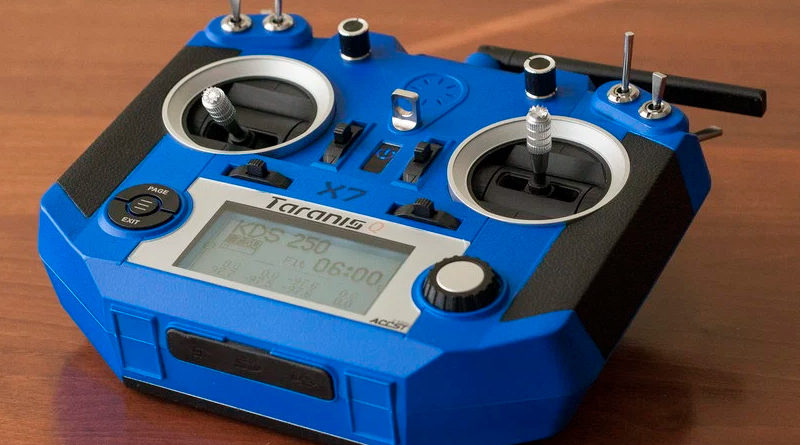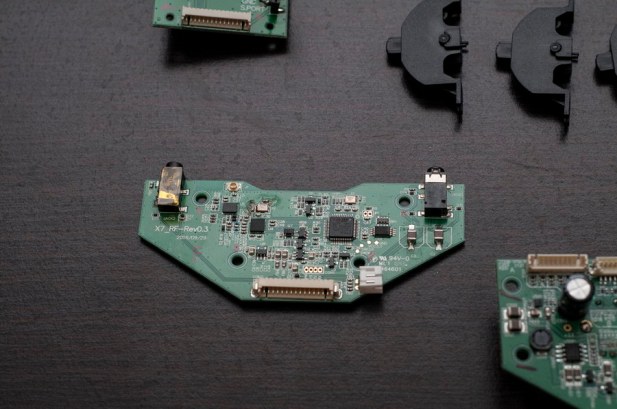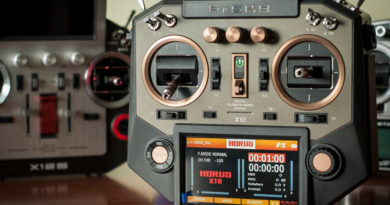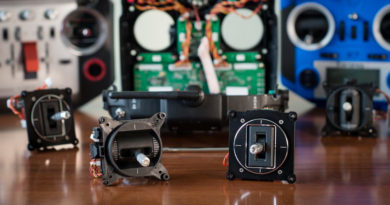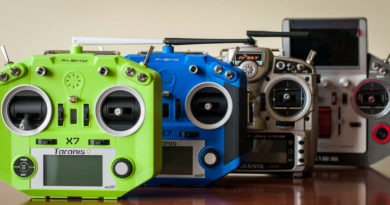FrSKY Taranis Q X7 (English)
Excellent FrSKY Taranis X9D Plus, more specialized Taranis X9E, new groundbreakng flagship Horus X12S and now the youngest brother in the FrSKY radio product lineup — Taranis Q X7. Claimed to have significantly lower price comparing to Taranis X9D Plus, this product is aimed to conquer minds of new hobby incomers and provide uncompromised experience for some tough budgets.
Link to the shop of my own preference
Now, welcome — the world’s first FrSKY Taranis Q X7 in white color!
For those who are not familiar with FrSKY Taranis Plus yet, I would like to shorty clarify why possessing FrSKY radios now is giving much more profit in a long term and why it outperforms almost any other competitors in price:
- First, it is the ACCST very reliable radio protocol that is proven to work at even the worst scenarios by many hobbyists around the world.
- Second, is the well developed accessories ecosystem that provides receivers, telemetry sensors and other products for any kind of a model and for any budget.
- Third, is the excellent OpenTX FW that is supported by all FrSKY radios that provides very flexible possibilities for any user.
- Forth, is the expandability option, thanks to having 1 inbuilt module and 1 external module bay of the JR type. One can have 32 channels in total.
- At last, it is all about the unbeatable ratio of price|quality|functionality that matters to any wise customer.
Now, when we are done with the essential stuff let’s move forward to Q X7 review:

Technical characteristics:
- Quad Ball Bearing Gimbals with tension and length adjustment. Spring loading for throttle
- FrSKY ACCST XJT internal module + JR type bay for external module
- Up to 32 CH
- Full Telemetry + X, D, V8II receivers support
- Audio Speech Outputs, loudspeaker and headphones jack
- JR Trainer port
- microSD card slot
- miniUSB connector for PC
- possibility to solder SPort to the board
- 3inch 128×64 backlit screen
- 4 3pos switches, 1 momentary switch and 1 2pos switch
- 2 pots (right with center detent, left with no center detent)
- 4 trimmers
- Power of 6 — 15V capable, JST 2S balance plug
- Haptic feedback
- OpenTX 2.2 FW
- 3 color LED under power on/off button
- any many other great features
- W:200mm, H:170mm, D:50mm. Weight: 631g.
In the box:
1 x Taranis Q X7 1 x Neck Strap 1 x Neck Strap Balancer 1 x User Manual 1 x battery tray for AA battery cells
UPDATE: seems that last units are now shipped with the NiMH battery
IMPORTANT: EU LBT version of Taranis Q X7 would support only X and LR receivers. FCC version would support X, LR, D, V8II receivers.
IMPORTANT: soon the new product — M7 — Hall sensor magnetic aluminum gimbals for Taranis Q X7 would be on sale. For now, there are similar M9 gimbals for X9DPlus and X9D already available.
IMPORTANT — INITIAL RADIO & MODEL SETUP GUIDE: HERE
Look and Feel:
Q X7 incorporates a new, modern design comparing to more conservative Taranis Plus look. But this is a matter of how well does this radio handles in overall, right? I do like the newer design and I do like how it feels in hands. So, nothing to complain about here. Although, I would say that I would like this radio to be a bit heavier which can be solved by using some larger capacity battery. Black or white color — they both would be available from the start — is up to the customer. I’ve got white and think that this would help a lot in case if I’d do some shell paint in future.

Rubber grips are handy and do an excellent job here. No slipping out of the hands.

I can reach any switch on the radio with my fingers despite the fact that I am a two-finger pilot. Switches seem to be on par with what we used to in Taranis Plus and knobs with center detents are very tight. I like this — no longer would I accidently move it.

One of the good new additions — power button is now equipped with 3 color LED under it. This is used to inform a user about different radio states and warnings.

Q X7 comes with a neck strap and a balancer. Personally, I don’t use neck straps very often but it seems to be well balanced when used together.
Screen and navigation buttons:

Screen and navigation buttons section are neat and perfectly located. Moreover, I would say that using navigation and control buttons is where Q X7 outperforms its older brother — Taranis Plus. Using rotary encoder with center press for ENTER and 3 control buttons on the left is much quicker and convenient comparing to separate buttons of Plus radio. Someone mentioned that he would lack some button shortcuts, but I’d say that shortcuts are used rarely comparing to other settings and navigation. So, consequently, the total time used to set the model would significantly decrease.
The screen is 3inch and has 128х64 resolution. Brightness and contrast can be adjusted. Backlight is provided by 4 LEDs at the upper part of the screen. LED color is white. Despite being smaller than the screen of X9DP — it still handles all the necessary information well. Nothing too small or unreadable. Unfortunately, I can still see the vertical line contrast difference in some sub-menus as in Taranis Plus but it is not a concern as long as the contrast is not dialed abnormally.

Loudspeaker and phones:
The loudspeaker seems to be revised to the point that it no longer produce RF interference noise and became a bit more clear and louder. The 3.5mm headphones jack at the top also performs well — it can reach very high volume levels and is not affected by the internal RF module.
There is one more element at the top — JR trainer jack.

The bottom part:
The bottom part has a rubber cover for microSD card slot and microUSB cable connector. (By the way, I’ve found that there is a place on the main board that is unused — for the Smart Port (GND, S.PT, +5V) (named CON400) that would be accessible through the bottom left hole of the case. S.Port on the bottom side (CON400) would not be physically available for early versions of the radio but would be a standard for all later releases (now, as of April 2017 — all radios come with S.PORT).
Large photo HERE.
This radio comes with no SD card, but having it is essential to use OpenTX FW and its external resources.

The back:
The back side has 2 covers: external JR type module and battery compartment. I’ve noticed that external module cover rattles a bit, but this can easily be fixed.
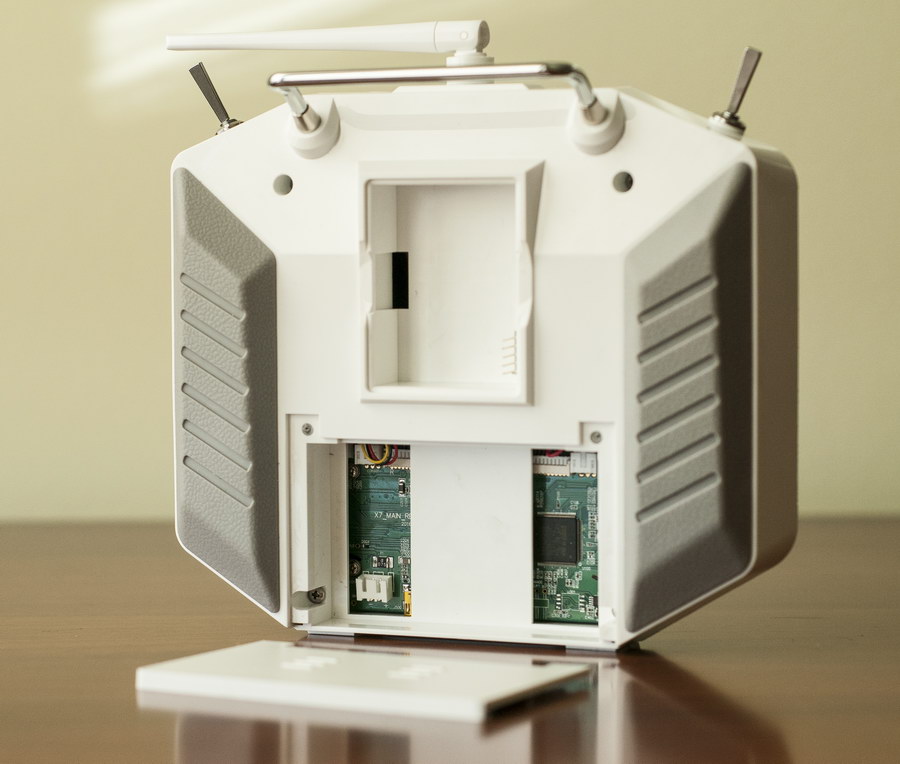
The battery bay has a physical dimensions of W:92mm x H:57mm x D:15mm so, you can use whatever battery would fit there.
I’ve double checked the battery bay size again:
W: 92mm (remember that you have to fit wires also there) x H: 57mm (would be tight) x D:15-17mm
If you’d have 15-16mm depth battery — it would fit perfectly. You can fit 17-18mm battery but the battery bay cover might rub against the battery and it would be harder to remove it. The bay cover gets easily removed if you’d press it a bit inside to shift it from the holding openings in the shell… That is why 15 (16mm max) is preferred… but, you can even use 17mm battery depth
Example of the battery that should fit inside perfectly.
Keep in mind that this radio can handle from 6 up to 15V of incoming voltage and the battery connector is JST balance 2S plug. No inbuilt charging circuit and no charging port consequently. Q X7 claimed to have 210mAh power drain at most, so, even 1000mAh battery would last about 3 hours of continuous use.
UPDATE: seems that last units are now shipped with the NiMH battery
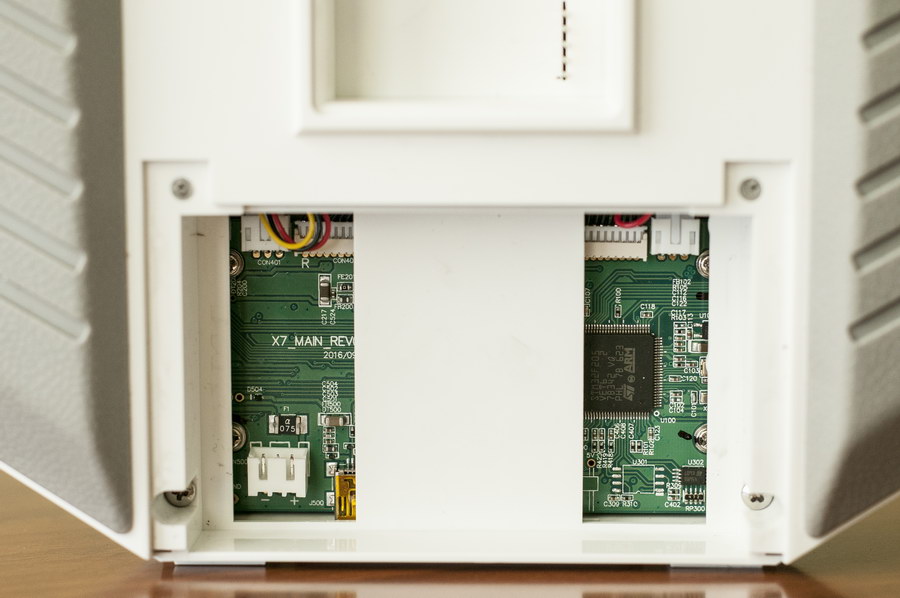
The sticks:
Sticks seem to be directly deposited from X9D Plus — the same quad bearing design and overall feel with one major change — throttle comes spring-loaded from the factory. Personally, I don’t use spring loaded throttle and had to adjust one screw inside the radio to get rid of that. Sticks tension and length can also be adjusted. There is also a ratchet option for both sticks.
When looking on the insides — stick cables are all neatly tied together with the special plastic lasso. I had to give each cable a bit more length to get the smoothest movements. In overall, I would say that Taranis X9DP and Q X7 are the same in terms of the sticks and how they feel.
The insides:
What is really good in this radio is how easy it is to disassemble. Only 4 screws to unscrew and no longer to loosen upper switches base to open the shell.

From the very first glance we can see that the antenna is no longer soldered to the board — it has a standard connector and can be easily exchanged.
Concerning the rest — everything seems to be assembled neatly and well. No signs of bad soldering or messy wiring. I would say that there is nothing to worry about at all.
This radio features the latest XJT radio module compatible with all X, D and V8II receivers and has full telemetry support. It would also come in FCC and EU LBT FW versions for different regions. I hope that antenna connector would stay after passing FCC and EU certification
The FW:
The radio comes with OpenTX 2.2 (nightly) preinstalled. I believe that when Q X7 would get released the FW would be updated to stable version. There is not much of a difference to Taranis X9D Plus firmware except for the look of the main and subsequent screen when pressing PAGE button. This has to do with the screen size and some information has changed its location. Anyway, everything is perfectly readable and usable. Main system and model menus are the same.
To get the latest FW version and SD card contents, please, check this page (first post): HERE (I always maintain the latest data in that thread)
By the way, I have discovered the new feature that I didn’t mention in the video — whenever we see a horizontal line on the main and subsequent screens with the press of the PAGE button — if we would scroll with the encoder the bottom half of the screen would show the next corresponding values. Example: when we are at channels monitoring screen at the bottom half we see only 8 channels output — scrolling with the encoder would shift to the next 8 channels and so on. At the same time, the horizontal bar in the middle of the screen would also shift the selection to indicate which number of the channels listing we are at currently. Good.
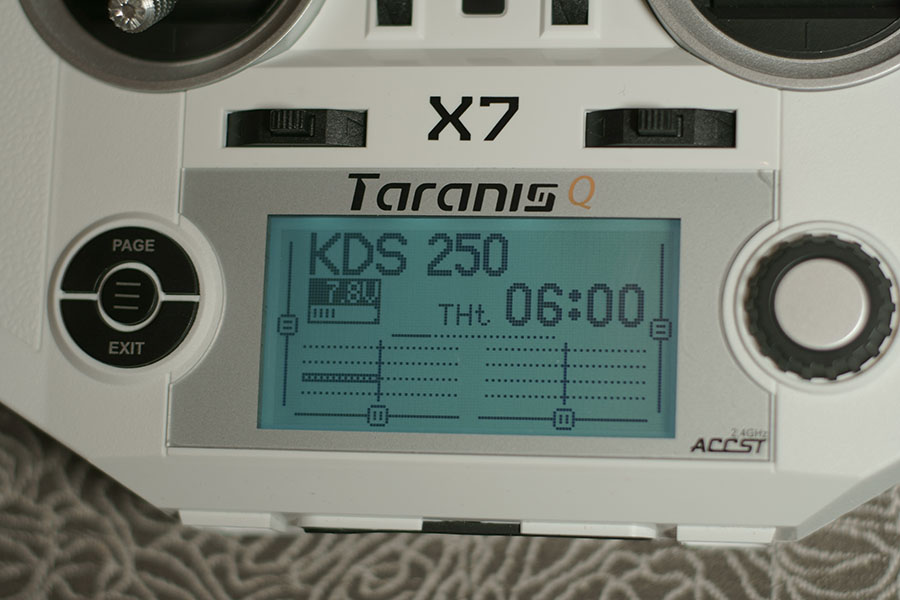
I couldn’t find Lua support in the current FW nightly build, therefore, cannot check how it works and looks but I hope that there are would be no changes except for the adoption of the smaller resolution.

DFU and bootloader mode are present. Either the radio is switched off and goes to DFU when connected to PC or it forwards all the resources to PC when switched on with trim buttons to center. OpenTX Companion latest build already has Taranis X7 profile but is not yet able to handle radio settings and models. Waiting for the final release or the next version update.
The test:
I wated to compare Q X7 and Taranis Plus in terms of radio signal strength. For this, I’ve taken 1 RX8R receiver and used it with both radios one after another. I’ve left the radios on the table and travelled the same distance through 3 floors of my house to find a room where both radios would report RSSI warnings. Both radios lost the signal at the same room — my garage. But, according to the video — you can see that two radios interpret RSSI figures in some different way or|and with different request periods. Sometimes Q X7 shows larger RSSI value while travelling through the house, sometimes Taranis Plus shows a better value. Moreover, Plus has somehow managed to record RSSI = 12 and Q X7 recorded the smallest RSSI = 46 (although there were lower RSSI values on the screen). So, I would say that it is too early to conclude something. To test both radios in the same conditions we have to use the same OpenTX 2.2 FW + it should be stable. The only conclusion so far — both lost the signal at the same room. Seems that both radios should handle signal similarly.

Conclusion:
I really like this new FrSKY product — Taranis Q X7. Its main aim is to satisfy newcomers and tight budgets not compromising the overall functionality. And I think that as long as the price would be reasonable — this little beast would outperform any other competitor in terms of price|quality|functionality ratio. The final word is awaited from the manufacturer’s side — the verdict on price (UPDATE: officially stated price is $105). Hope that it would not be a miss and this radio would be able to attract a whole bunch of new users to the FrSKY worldwide community.
IMPORTANT — INITIAL RADIO & MODEL SETUP GUIDE: HERE
UPDATE: done some painting mod:


How this mode was done:
I used locally made NewTone spray paints:
Blue color — fluorescent — 3 layers, no primer
Structure black for plastic — 3 layers, no primer
And matt lacquer over all the paint — 3 layers
I’ve removed screen glass by heating it. I’ve removed FrSKY metallic letters from the top by heating it. And I’ve covered hand grips to protect them. And the rest of the radio was completely disassembled. It is better to protect and not to paint the following shell parts: base for screen glass, base of battery bay cover. If you’d paint those — parts might not fit together well because there would be 3-6 layers of paint.
Fluorescent paint is semi-transparent and requires white color as a primer layer. White radio shell is excellent for this.
Link to the shop of my own preference

